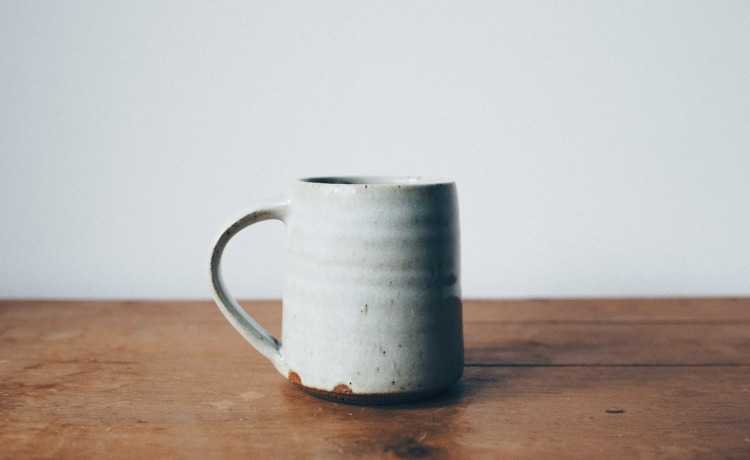What is sick building syndrome?
Closed building harbors several health hazards. Allergies, headaches and worsening of pre-existing conditions such as asthma

Edited image of delfi de la Rua on Unsplash
The sick building syndrome was recognized by the World Health Organization (WHO) in 1982, after proving that the death of 34 people and the finding that 182 cases of contagion with the bacterium called Legionella pneumophila were caused by contamination of the indoor air of a hotel in Philadelphia.
Several illnesses can be triggered by the environment in which you live, whether at home or at work. Have you ever felt when entering a building that your eyes and nose got irritated, had headaches, lack of concentration, or fatigue? It is possible that the site in question was a "sick building".
- What is geobiology?
But after all, what is a sick building?
The sick building syndrome refers to the cause and effect relationship between the conditions of an internal environment and the aggression to the health of the occupants, with polluting sources of physical, chemical or biological origin. A building is considered sick when about 20% of its occupants have health problems associated with staying inside. Construction-related symptoms can have a substantial impact on health.
In some cases, simply leaving the site is enough for the symptoms to disappear, but the problem can cause more serious disorders when the individual is predisposed or exposure is prolonged, causing building-related diseases (building-related illnesses - BRIs, in English).
Contamination of the environment can lead to new disorders, exacerbate pre-existing diseases (such as rhinitis and asthma) and trigger disorders caused by exposure in the workplace (such as occupational asthma, hypersensitivity pneumonitis). According to the magazine's data Environmental Health, about 60% of people who live in these sick environments may have complications originating from the syndrome. These places facilitate the increase in the absenteeism rate (workers who are absent from work). Air quality has a direct influence on occupational health, as, in a compromised environment, workers' productivity and quality of life are harmed.
In industrialized countries, people spend a large part of their lives indoors, whether at home, in offices or similar environments. But even so, little - or almost nothing - is said about indoor air pollution. Considering our time spent inside these places, one would imagine that the impact on health would be greater than external pollution.
According to the WHO classification, there are two types of sick building: temporarily sick buildings and permanently sick buildings. Temporary sick building syndrome refers to newly constructed or recently remodeled buildings that have irregularities that disappear over time (approximately six months). Permanently ill buildings, on the other hand, may present design errors, lack of maintenance, or other factors that caused permanent damage.
New buildings, designed without the use of safe materials, have high concentrations of VOCs and particulate matter from building materials and furniture. But old buildings, with aging equipment, accumulation of dust, mold, dampness on the walls, accumulation of chemical and biological contaminants in refrigeration systems can also offer environments with health risk.
It is popular wisdom that we should let the room ventilate so that the air can be renewed, but modern buildings, especially commercial ones, have an integrated ventilation system, which is not always properly maintained. Among other reasons, it can be contaminated with bacteria and viruses, and end up triggering various unwanted conditions. Not to mention chemical contaminants.
modern architecture and health

In the 70s there was a change in architectural projects for commercial buildings as a result of the global energy crisis. The trend was to create increasingly closed environments. They have minimal openings for ventilation and little exchange of air with the external environment, thus reducing energy expenditure in maintaining air circulation and cooling. “Hermetically sealed” buildings helped to reduce energy consumption, however, the radical reduction in the intake of outside air meant an insufficient rate of air renewal. As a result, there was a drop in air quality and an increase in the concentration of chemical and biological pollutants, which threaten the health of the occupants.
Huge glass (or mirrored) facades replaced windows. Independent air conditioners gave way to closed environments, with air ducts cooled or heated by a central. The automation of air conditioning systems, initially, focused only on controlling the variables of indoor air temperatures and relative humidity, and ignored air quality parameters. For this reason, sick building syndrome is often called mirror building syndrome.
Advances in chemistry, and the growing use of oil, made it possible to use new materials, in search of better aesthetic and functional quality. More and more plywood, varnishes, adhesives, wallpapers, rugs, removers, among other materials that are sources of pollution, started to be used. The use of formaldehyde resins, mainly used in particleboard furniture, partitions and adhesive material to fix carpets, also grew. Carpets sanitized with shampoos and other highly toxic industrial chemicals, by the way. Equipment to streamline services (generating ozone and ammonia) further increased the contamination of the indoor environment. In short, modern, closed buildings are a complex ecological niche, a source of countless diseases for humanity.What are its causes?
Chemicals

The main indoor environment contaminants appear in chemical form. Among the chemical contaminants are: carbon monoxide, nitrogen dioxide, ozone, formaldehyde, sulfur dioxide, ammonia and radon 222 (from the radioactive decay of radium 226), present in soils, groundwater and materials such as stones, bricks and concrete . Synthetic coating materials, wood pellets, carpets, wallpaper, glues, removers, wax, insulation foams, solvents, paints, varnishes, as well as equipment such as printers and photocopiers and cleaning products are potential sources of contamination.
Furniture and utensils can release harmful substances in small amounts for years. The chemical substances released by these products are dispersed in the air, volatile organic compounds are prominent in this contamination. The level of pollutants in indoor air can even be higher than outdoor air. Volatile organic compounds have irritating properties and an unpleasant odor, and may trigger irritation symptoms such as sneezing, coughing, hoarseness, itchy eyes, hypersensitivity reactions, vomiting, etc.
Biological

Biological factors can also be hazardous to the health of occupants. Bacteria, fungi, protozoa, arthropods, viruses and animal excrement in general are elements that can contaminate the environment. Particles of biological origin, suspended in the ambient air, are called bioaerosols.
The inhalation of these particles can cause many complications, and several factors influence the level of the disorder: the biological and chemical properties of the particles, the quantity inhaled, the place where they are deposited in the respiratory system and the individual's sensitivity. The most common fungi are: Penicillium, Cladosporium, Alternaria and Aspergillus, and the main bacteria: Bacillus Staphylococcus, Micrococcus and Legionella Pneumophila.
Reservoirs with stagnant water, cooling towers, condensate trays, dehumidifiers, humidifiers, air conditioning coils, are places that can be the focus of biological agents. It is essential to maintain proper maintenance and cleaning of the appliances.
Leakage and leaks must be eliminated, humid environments and porous materials, such as ceilings, walls and insulation, deserve special attention so as not to become a focus of contaminants. Fixed surfaces and furniture must be frequently sanitized (Know natural cleaning materials). The use of fabrics and rugs should be minimized, they need special care when cleaning. In addition, access must be restricted and control of rodents, bats, bird nests and their droppings.
Physicists

The physical factors that influence the health of the environment range from lighting, noise level, electromagnetic fields, temperature and ambient humidity. All of this can cause complications for the occupants if they are not at adequate levels.
Excessive and poor lighting can cause visual fatigue, headaches, tension, drop in performance, accidents and even dysregulation of the circadian rhythm and damage to the macula. Understand this theme better in the article: "Blue light: what it is, benefits, damages and how to deal".
- What is light pollution?
- Noise pollution: what it is and how to avoid it
Symptoms

Workers in hundreds of modern, closed buildings in North America and Western Europe have reported, since the early 1970s, various complaints about health and comfort. These buildings are the main sites affected by the sick building syndrome. Symptoms may appear singly or in combination, and in many cases they are not associated with the syndrome as they are confused with a common respiratory illness. Not all occupants of a sick building will necessarily show symptoms, but investigation of the environment is essential for a correct diagnosis.
Mucosal odors and irritation lead to stress and behavioral responses, such as opening a window or leaving the building. These are signs that the environment may have poor air quality. Even if analyzes of air samples do not indicate significant concentrations of any of the pollutants present, the combination of the effects of different pollutants, present in low concentrations, may be enough to generate discomfort. In general, building-related illnesses worsen over weekdays, and improve at night, after leaving the building, and on weekends.
The issue is related to occupational health, considering the cause and effect relationship between the workplace and the symptoms resulting from aggressions to the well-being of these environments. In 1982, the WHO Technical Committee defined the set of main symptoms to recognize Sick Building Syndrome: headache, fatigue, lethargy, itching and burning in the eyes, irritation of the nose and throat, skin problems and difficulty concentrating.
Symptoms are divided into some main groups: eye problems, respiratory manifestations, cutaneous manifestations and general problems. Eye problems include irritation, tenderness, pain, dryness, itching, or constant tearing.
Nasal manifestations are nasal irritation, nasal constipation, runny nose, runny nose, feeling of oppression and difficulty breathing, worsening of symptoms of asthma, rhinitis and other respiratory diseases, sensation of dryness, pain and irritation of the throat.
Skin abnormalities involve dryness, itching, irritation, allergy and general acne. The general problems range from severe and moderate migraines to vertigo, generalized fatigue, dizziness, lethargy (sleepiness and weakness), difficulty concentrating, nausea, malaise and stress. Stress can trigger a series of other illnesses, such as sleep disorders, eating disorders, anxiety, etc. Complaints in closed buildings are double those in naturally ventilated buildings.
Brazil
A study carried out by the National Institute of Metrology, Quality and Technology (Inmetro) in 78 establishments for private and collective use, including supermarkets, cinemas and shopping malls, artificially air-conditioned, revealed that about 42.3% of these places are contaminated by pollutants chemicals such as high concentration of CO2. In addition, 56.4% of the buildings had low temperature and humidity problems.
The first legislation aimed at ensuring air quality in climate-controlled environments was Ordinance 3.523/98, of the Ministry of Health, which established a routine of cleaning procedures in large-scale refrigeration systems. It was updated in 2000 and 2002.
The National Health Surveillance Agency (Anvisa) determines reference standards for indoor air quality for environments of public and collective use, artificially air-conditioned. In the resolution, you can check the maximum levels of pollutants from biological and chemical contamination, as well as physical parameters of the indoor air. The document also presents recommendations for control and correction, in case the air standards are considered regular or bad. Attention must be paid to places where the risk of contamination can be fatal for people with a weakened body, such as hospitals and places with elderly people and children.
healthy environment
Now that you know what a sick building is, you may be wondering how to find out if the materials that will be used in your architectural project or if the environment you live in are healthy, right?
To understand how to build a healthy environment, get to know geobiology, an area of knowledge that studies the impact of environmental architecture on human health: "What is geobiology?".

There is also the Healthy Home Seal (SCS). The seal, coordinated by the Healthy Building World Institute (World Institute for Healthy Construction), its mission is to ensure healthy spaces that provide well-being for society. It is the world's first certificate for buildings, professionals and construction products that takes into account elements of health and well-being.
The SCS accreditation system submits the design, building, professional and procedure to rigorous tests and verifications. This way, you can confidently trust the product, person or procedure that bears the Healthy Home Seal. It is more care for the lives involved and less expense for doctors to treat the conditions that an unsafe environment can provide.
Living and working in healthy environments greatly increases the quality of life, improves health and mood, reduces exposure to opportunistic diseases and absenteeism at work. A safe environment is good for your pocket and well-being.
Learn more about the healthy home stamp and how to get it.










